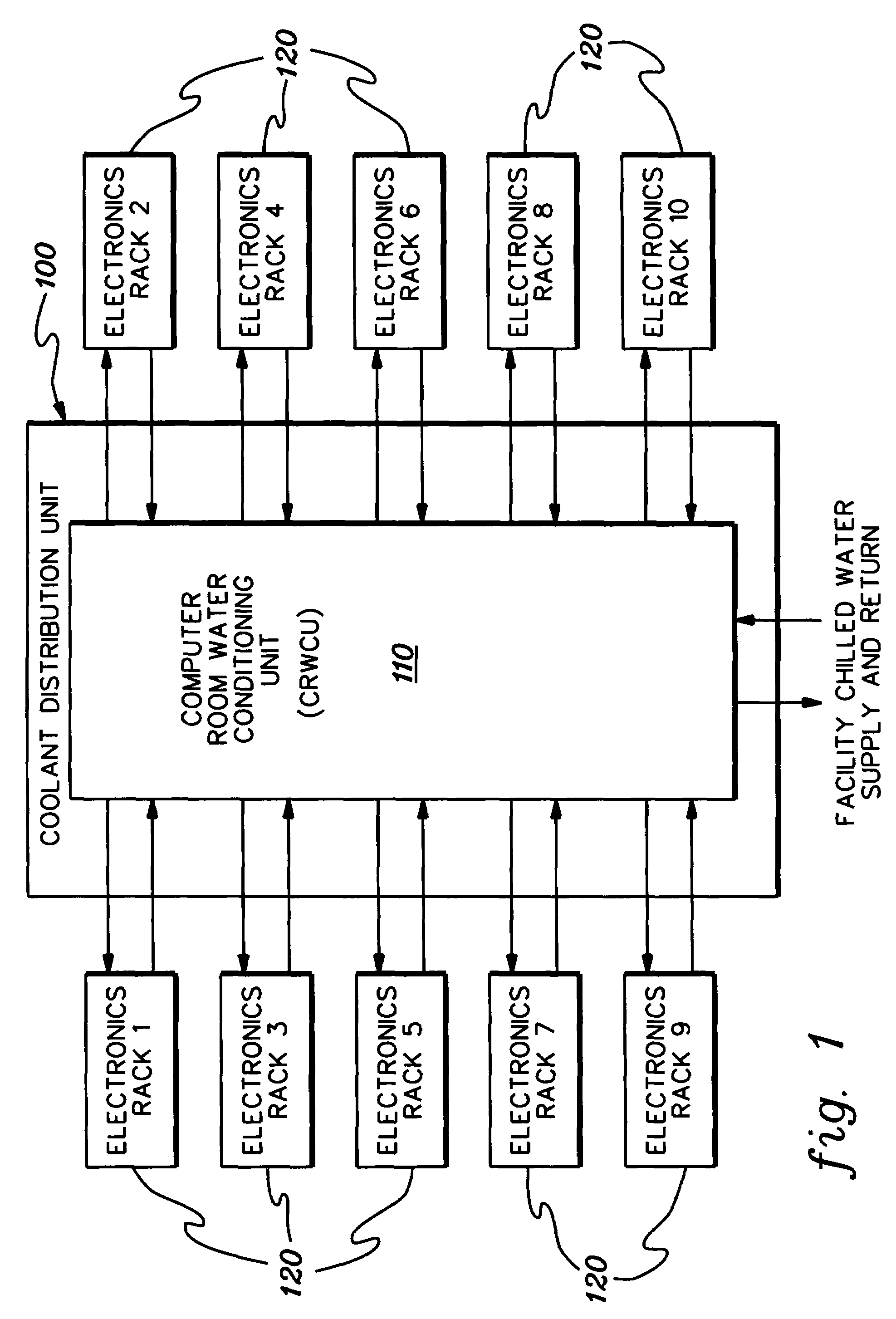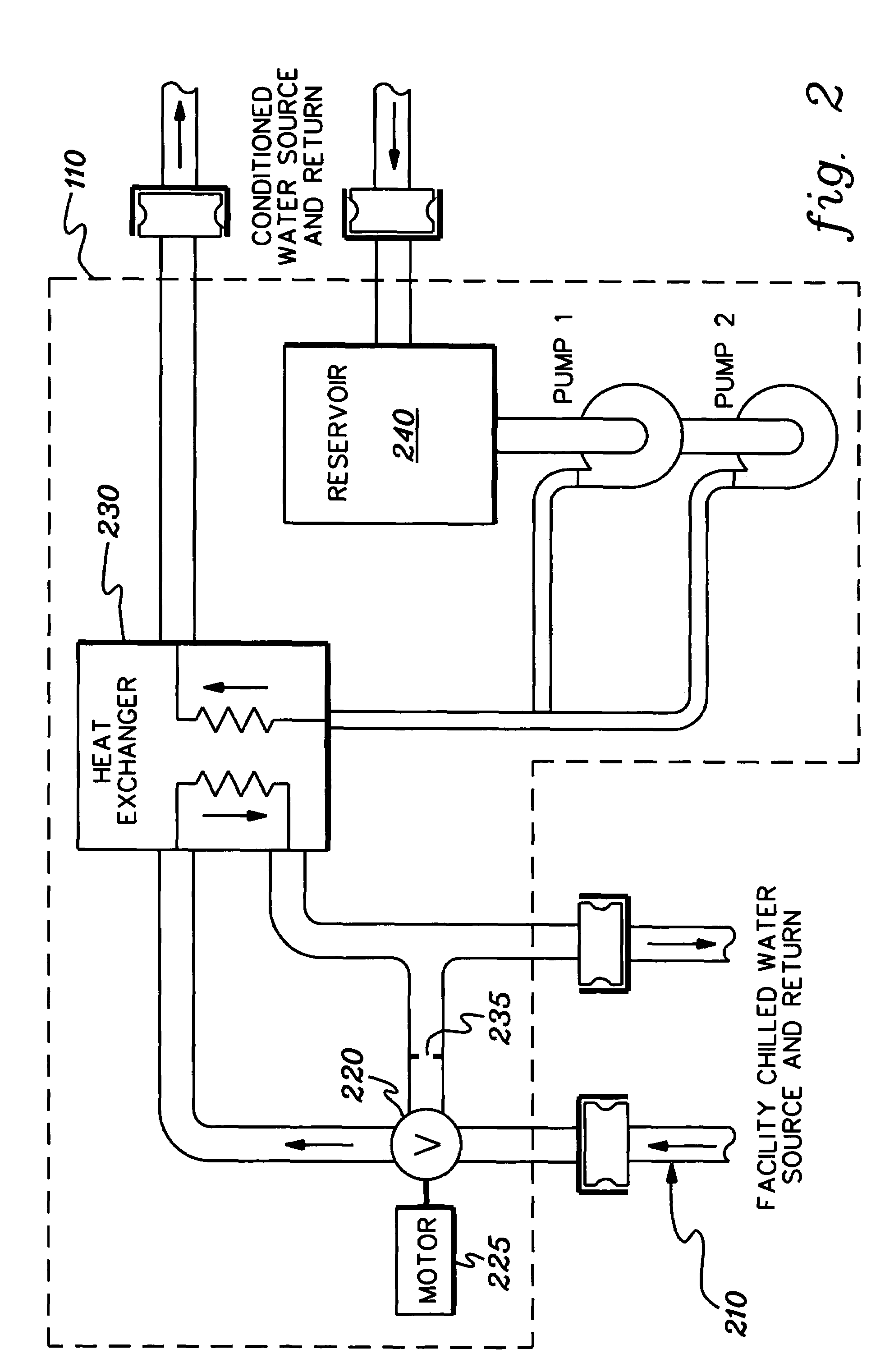Cooling system and method employing multiple dedicated coolant conditioning units for cooling multiple electronics subsystems
a technology for electronics subsystems and cooling systems, applied in domestic cooling apparatus, semiconductor/solid-state device details, instruments, etc., can solve problems such as all frames losing conditioned water, and bringing down the entire computer room floor
- Summary
- Abstract
- Description
- Claims
- Application Information
AI Technical Summary
Benefits of technology
Problems solved by technology
Method used
Image
Examples
Embodiment Construction
[0025]As used herein “electronics subsystem” comprises any housing, frame, rack, compartment, etc., containing one or more heat generating components of a computer system or other electronics system requiring cooling. The term “electronics rack” includes any frame or rack having a heat generating component of a computer system or electronics system; and may be, for example, a stand alone computer processor having high, mid or low end processing capability. In one embodiment, an electronics rack may comprise multiple electronics drawers, each having one or more heat generating components requiring cooling.
[0026]One example of coolant within the coolant distribution unit, or more particularly within the multiple coolant conditioning units (CCUs) described herein, is water. However, the concepts disclosed are readily adapted to use with other types of coolant on both the facility side and the system side. For example, the coolant may comprise a brine, a fluorocarbon liquid, or other si...
PUM
 Login to View More
Login to View More Abstract
Description
Claims
Application Information
 Login to View More
Login to View More - R&D
- Intellectual Property
- Life Sciences
- Materials
- Tech Scout
- Unparalleled Data Quality
- Higher Quality Content
- 60% Fewer Hallucinations
Browse by: Latest US Patents, China's latest patents, Technical Efficacy Thesaurus, Application Domain, Technology Topic, Popular Technical Reports.
© 2025 PatSnap. All rights reserved.Legal|Privacy policy|Modern Slavery Act Transparency Statement|Sitemap|About US| Contact US: help@patsnap.com



